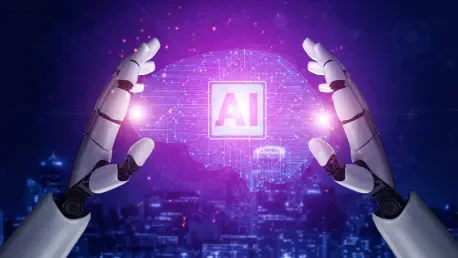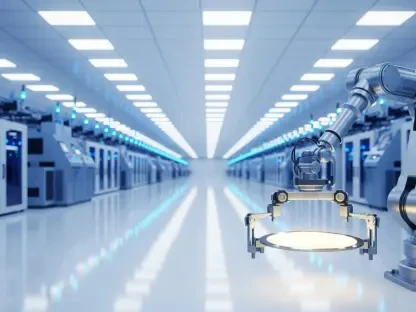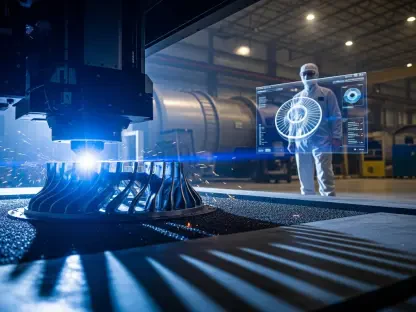The integration of AI into manufacturing processes has revolutionized the industry, offering significant advantages such as increased efficiency, cost reductions, and enhanced innovation. As companies adopt AI to streamline operations, they face the critical challenge of maintaining robust security and compliance frameworks. The rapid evolution of AI presents both opportunities and risks, necessitating a careful balance between leveraging technology for advancement and ensuring that the deployment remains secure. Manufacturers are now tasked with navigating complex landscapes that demand proactive governance and the implementation of comprehensive risk management strategies to avoid potentially damaging consequences.
The Allure of AI in Manufacturing
AI’s transformative power in manufacturing is undeniable, driving processes toward unmatched levels of productivity and innovation. By automating standard tasks and providing predictive maintenance solutions, AI optimizes production lines and enables companies to reduce operational costs. Manufacturing firms have embraced AI-powered tools for real-time supply chain monitoring and quality control, allowing them to enhance product quality while minimizing waste. The National Association of Manufacturers notes that most companies have successfully decreased costs and improved efficiency using these AI-based practices, reflecting a widespread belief in AI’s potential to revolutionize traditional methods.
Despite the apparent benefits, a growing reliance on AI introduces considerations beyond technology implementation, notably the need for robust governance frameworks. As AI systems become more integral, they demand sophisticated oversight to ensure accurate outputs and secure data handling. These frameworks not only safeguard operations from threats but also ensure compliance with emerging regulatory standards targeting transparency and accountability in AI developments. Failure to incorporate appropriate governance can expose companies to vulnerabilities like breaches or inaccuracies, leading to financial or legal repercussions. Such scenarios necessitate a strategic approach that incorporates security and compliance into every aspect of AI deployment.
Navigating Security and Compliance Challenges
The integration of AI into manufacturing comes with notable security and compliance concerns, particularly as companies rush to adopt advanced technologies without fully understanding the implications. This eagerness often overlooks the necessity for comprehensive governance strategies, exposing manufacturers to risks such as data breaches and regulatory noncompliance. Companies that inadequately address these issues may face legal penalties or operational restrictions, underscoring the necessity of standardized procedures that adhere to regulatory frameworks designed to protect data privacy and maintain operational integrity.
The misalignment with regulatory standards poses significant challenges, as manufacturers grapple with the complexity of AI legislation still evolving in many regions, including the United States. Noncompliance can incur penalties, emphasizing the importance of implementing centralized governance, risk, and compliance systems to effectively track and report AI developments. These systems provide manufacturers with a clear overview of AI-related risks, facilitating timely identification and mitigation of vulnerabilities. As regulations evolve, adopting these centralized frameworks becomes imperative to safeguard operations and maintain adherence to legal standards, ensuring that technological advancement does not come at the expense of security.
The Impact of Labor and Automated Solutions
A notable challenge within the manufacturing sector is the current labor crisis, which has been exacerbated by the rise of AI automation. While AI offers solutions that reduce the need for specific labor tasks, the automation shift raises concerns over job availability and its long-term impact on the workforce. Research predicts that AI-driven automation could significantly influence the global labor market by displacing millions of workers from their traditional roles within the coming years. This potential shift calls for early strategies to prevent workforce disruption, enabling a seamless transition to a more balanced coexistence between human workers and AI technologies.
Balancing AI innovation with labor requirements requires innovative workforce strategies that embrace reskilling and upskilling initiatives. By investing in education and training programs, companies can equip employees with the skills needed to thrive in the increasingly AI-driven manufacturing landscape. Such programs ensure that human expertise remains invaluable, complementing AI advancements rather than being sidelined. Establishing clear communication channels and involving employees in the transition to AI integration can foster an environment of collaboration and innovation, where both human and artificial intelligence contribute to optimized manufacturing processes and sustained growth.
Proactive Governance for Successful AI Deployment
To ensure successful AI implementation in manufacturing, companies must prioritize establishing comprehensive governance strategies that address potential risks and safeguard against vulnerabilities. These strategies involve regular validation and auditing of AI models to prevent errors stemming from biased, incomplete, or outdated data. By conducting thorough data vetting and clean-up processes, manufacturers can minimize inaccuracies in AI outputs, which, in turn, reduces waste and diminishes the likelihood of product recalls or regulatory penalties. Proactive governance creates a buffer that effectively prevents compromised decision-making.
Incorporating robust cybersecurity measures further fortifies AI systems, protecting sensitive data and maintaining the integrity of operations. Initiatives such as automated compliance monitoring provide real-time insights into potential security breaches, allowing companies to respond swiftly and maintain compliance with evolving legislation. A centralized approach to governance and compliance can unite disparate departments within a company, creating a cohesive strategy that anticipates AI-specific challenges while ensuring that manufacturing remains secure and efficient. Through such strategic foresight, the manufacturing sector can confidently harness the full potential of AI without compromising security or regulatory compliance.
Ensuring a Balanced Future in AI-Driven Manufacturing
The incorporation of AI technology into manufacturing has dramatically transformed the industry, presenting considerable benefits such as boosted efficiency, decreased costs, and fostering innovation. As businesses embrace AI to optimize their operations, they confront the essential challenge of securing robust security and adhering to compliance standards. The swift advancement of AI brings both opportunities and threats, necessitating a thoughtful balance between utilizing technology for progress and ensuring its use remains secure. Manufacturers are now required to maneuver through challenging environments that call for active governance and the integration of thorough risk management tactics to avert potentially harmful outcomes. Additionally, they must consider ethical considerations and long-term impacts of AI, ensuring not only the immediate gains but also sustainable growth. As the industry evolves, there’s a growing emphasis on collaboration among stakeholders to promote best practices, transparency, and continuous improvement within AI-integrated manufacturing.









